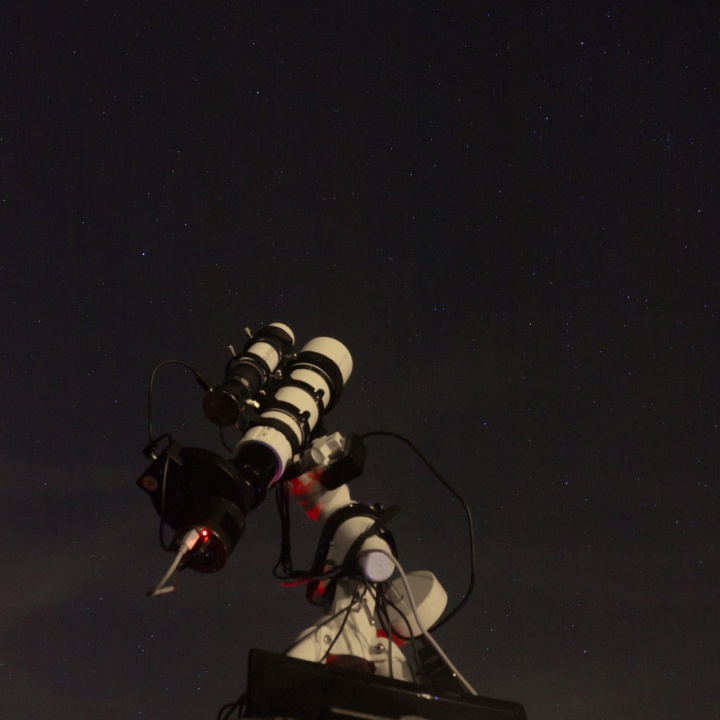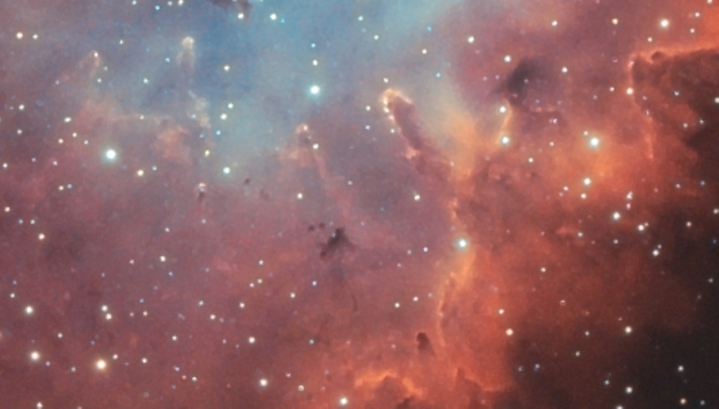I spent two nights out in the field to capture photons from NGC 281, a relatively large emission nebula in the constellation Cassiopeia that lies about 9200 light years from Earth. Both H-alpha and OIII filters showed relatively bright nebulosity, which was definitely promising for the quality of the final integrated exposures. My new dew heater straps were also really useful, because the relative humidity was really high on both nights. At certain moments, the surrounding fields were filled with fog and my laptop screen was covered with condensation at the end of each imaging session.

The nebulosity of NGC 281 is excited by radiation from the central star cluster IC 1590, while a large cloud of dark dust directly to the right of the cluster obscures a large part of the emission nebula. It is often called the Pacman nebula due to the circular shape of the nebulosity, which refers to the 1980’s arcade video game character.
I combined my data as a bi-color image with hydrogen mapped to red and oxygen mapped to blue. My inspiration for processing came from several references, most notably Marcel Drechsler’s image from 2018, which offers an extremely deep view of the extended nebulosity. I also spent a lot of time on the appearance and color of the stars, trying to get good tonal diversity.

My favorite part of this nebula is probably the structure of several tiny dark bok globules (from which new stars can be formed) and the subtle pillar-like shapes in the nebulosity that were carved out by stellar winds from IC 1590. These pillars are very similar to the structures seen in my “Pillars of creation” image.

Technical details:
Dates: 4, 5 October 2018
Telescope: Teleskop-Service 80 mm f/6 FPL-53 triplet APO
Corrector: 2″ TS 0.79X reducer/flattener and Baader 2″ UV/IR filter
Camera: ZWO ASI1600MM-C with EFW-8 and ZWO 31mm filters
Mount: Skywatcher EQ5 Pro
Accessories: ASToptics dew straps, Omegon 2 Channel dew controller
Power: Tracer 16 Ah + 7 Ah 12V LiFePO4 batteries
Exposure: 4.0 hours
Ha 7 nm: 94 x 120 sec (gain: 200, bin 1×1, -15C)
OIII 7 nm: 27 x 120 sec (gain: 200, bin 1×1, -15C)
Software: APT, PHD2, EQMOD, PixInsight
Lensed SQM at zenith: 19.2



